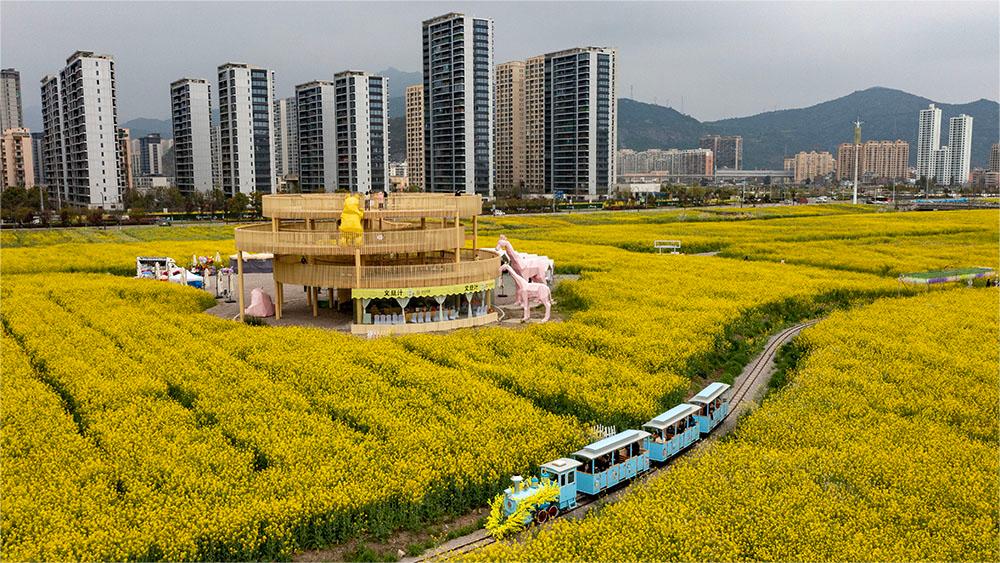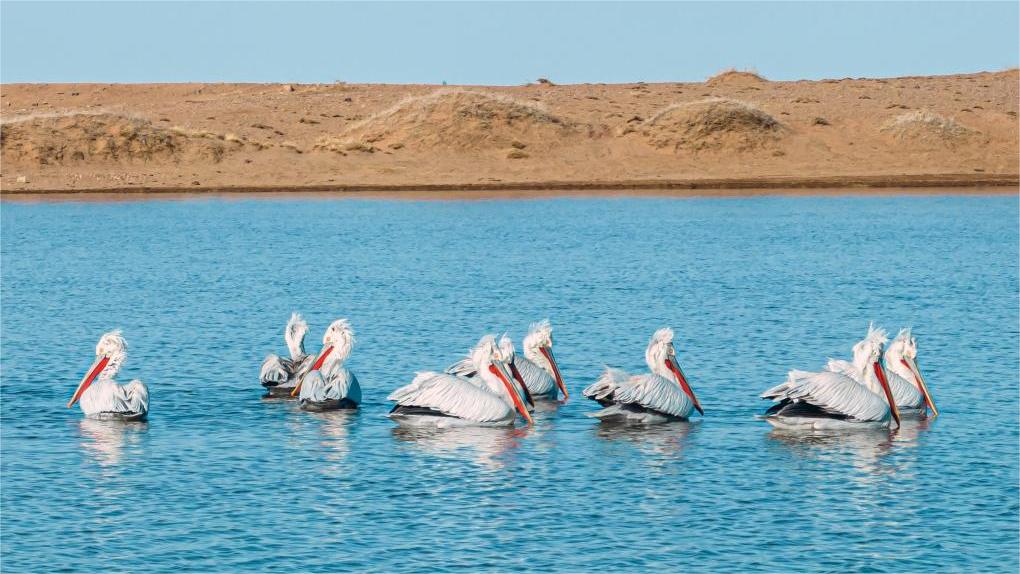Pastures in north China begin grazing moratorium for grass rejuvenation
HOHHOT, April 3 (Xinhua) -- Cattle and sheep have been confined to sheds starting Monday in major grasslands in north China's Inner Mongolia Autonomous Region, as the pastures undergo a 45-day grazing moratorium aimed at revitalizing grass productivity.
Spring is a peak season for livestock production. Duurenbilig, a herdsman belonging to a Mongolian ethnic group residing on the Xilin Gol grasslands, said that he carefully checked his cattle sheds and sheep pens before the moratorium came into force.
"The forage must be prepared in advance to feed the livestock," he said, adding that he harvested grass last autumn and stored it for both the winter season and the moratorium period.
Administered by the Xilin Gol League, the Xilin Gol grasslands, spanning 220 million mu (about 14.7 million hectares), are included in this year's grazing moratorium, for which 101,000 herdsmen households are entitled to subsidies.
The Xilin Gol grasslands became the first area in Inner Mongolia to implement the spring grazing moratorium in 2018, which was extended to the whole of Inner Mongolia this year.
According to the regional forestry and grassland bureau, a total grazing area of 970 million mu is subjected to the grazing moratorium this spring.
Thanks to years of ecological preservation efforts, Xilin Gol grasslands have regained considerable vitality. The vegetation coverage of natural grasslands hit 26.5 percent last spring in the area, with the average height of the grasses reaching 7.7 cm during the period.
Earlier this year, the regional government rolled out a pilot plan to address the problem of grassland overgrazing. This initiative employs precision methods tailored to treat various types of grasslands while taking into account the diverse local economic conditions.
Large swathes of grassland in Inner Mongolia have suffered from desertification and salinization due to overgrazing, drought and other factors. However, over the past decade, the vegetation coverage of the grasslands in the region has notably improved, thanks to integrated efforts, such as the grazing ban, incentive policies for grassland protection, and initiatives focused on restoring degraded vegetation and soil in the grasslands.
Photos
 Migratory birds spotted in Karamay, NW China's Xinjiang
Migratory birds spotted in Karamay, NW China's Xinjiang Tourist-dedicated New Orient Express gears up to offer luxury train travel around NW China's Xinjiang
Tourist-dedicated New Orient Express gears up to offer luxury train travel around NW China's Xinjiang Spectacular sea of blooming rapeseed flowers attracts tourists to Yueqing, E China's Zhejiang
Spectacular sea of blooming rapeseed flowers attracts tourists to Yueqing, E China's Zhejiang Rare bird species spotted in north China's grassland
Rare bird species spotted in north China's grassland
Related Stories
- Chinese Juncao hailed as "grass of happiness" around globe
- Rehabilitated prairies fortify green barrier in north China
- Rare grass species discovered in SW China
- Herdsmen harvest grass in Xinjiang
- Ganhaizi Grassland in Jiuzhai Valley
- Planting more grass to boost animal husbandry
- Lhasa's Quxu county plants forage grass
Copyright © 2024 People's Daily Online. All Rights Reserved.





